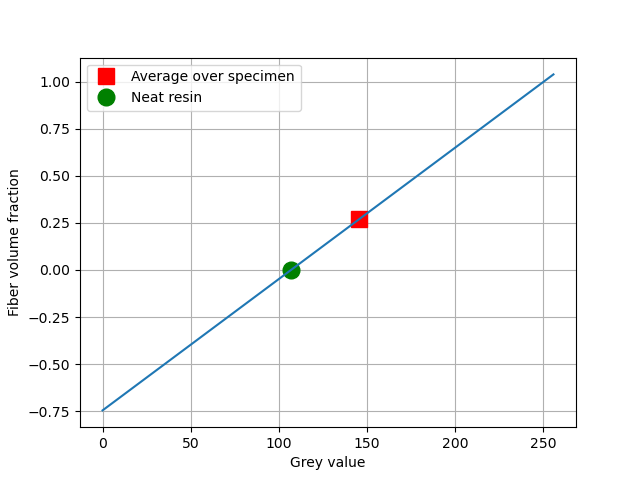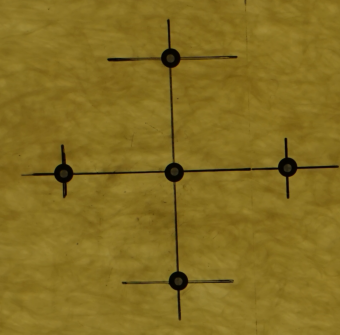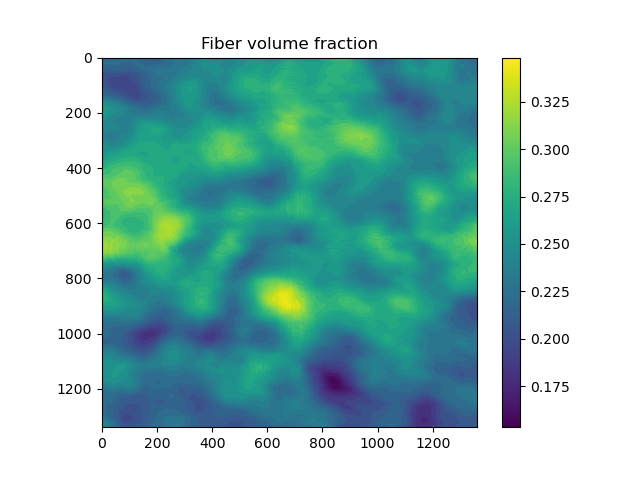Identify local fiber volume content of flat thin fiber reinforced composites based on 2D optical images. The algorithm described here is very simple and has been developed in cooperation with Juliane Lang within the DFG-project IRTG2078. Applicability is not proven and potential problems are discussed below.
See license, acknowledgment and please cite as
@software{juliankarlbauer_2021_4471261,
author = {JulianKarlBauer},
title = {JulianKarlBauer/fiberspot: Prototype},
month = jan,
year = 2021,
publisher = {Zenodo},
version = {v0.0.1},
doi = {10.5281/zenodo.4471261},
url = {https://doi.org/10.5281/zenodo.4471261}
}Call for application: If you have data sets you would like to analyze, please contact me or think about opening an issue.
Local fiber volume fraction is the fiber orientation information of zeroth order. Spatial variance of fiber volume fraction is an inherent property of inhomogeneous materials. Accurate determination of local mechanical properties by e.g. homogenization schemes requires knowledge on the local fiber volume fraction.
Local fiber volume fraction can be determined by analyzing reflection and distraction of radiation as e.g. x-rays.
Optical measurements, i.e. images taken with conventional cameras, are
- Availabile
- Cheap
- Flexible
- And offer high resolution.
If a flat, shell-like specimen is illuminated from one side and the transmitted light intensity is measured by on optical sensor (camera) from the other side, we call the resulting image an radiography image.
This package maps light intensity of radiography images to local fiber volume fraction. The key idea can be used for any heterogeneous materials consisting of phases with differing transparency or noticeable reflection at the interfaces of the phases. An example are some glass fiber reinforced thermosets.
- Homogeneous lightning conditions
- Homogeneous specimen thickness
- Exploitation of complete range of light intensity of camera
- Identification of lower bound for neat resin (watch specimen thickness)
- Identification of local coordinate system
- Masking features inside an image by image segmentation
- Weighted / normalized convolution filtering
- Identify linear mapping between local fiber volume fraction and light intensity
from the following two measurements:
- Light intensity in specific region with fiber volume fraction equals zero, i.e. without fibers
- Average light intensity of specimen correlating with average volume fiber fraction of the specimen
Inverted light intensity, i.e. darkness:
| --------------|----------------|---------------- |
lower bound neat resin specimen mean upper bound
- Clone the git-project to your machine
git clone
- Install the package from local repository into current environment in develop mode:
python setup.py develop
Note: Develop vs. install
See the example script which identifies a field of the local fiber volume fraction using various filter algorithms:
Original Image
Application of the skimage mean filter with disk area and a radius of 60pixel combined with normalized convolution filtering masking the hair cross yields
The research documented in this repository has been funded by the German Research Foundation (DFG, Deutsche Forschungsgemeinschaft) - project number 255730231. The support by the German Research Foundation within the International Research Training Group “Integrated engineering of continuous-discontinuous long fiber reinforced polymer structures“ (GRK 2078) is gratefully acknowledged.
Supply of the example image by Juliane Lang is gratefully acknowledged.



